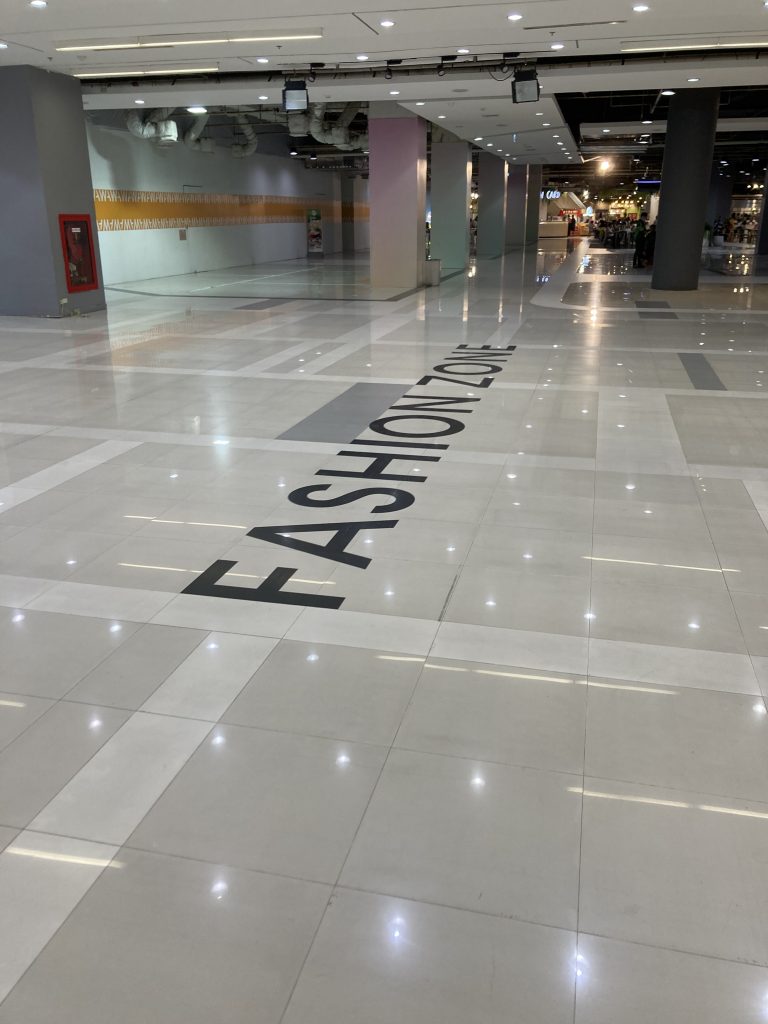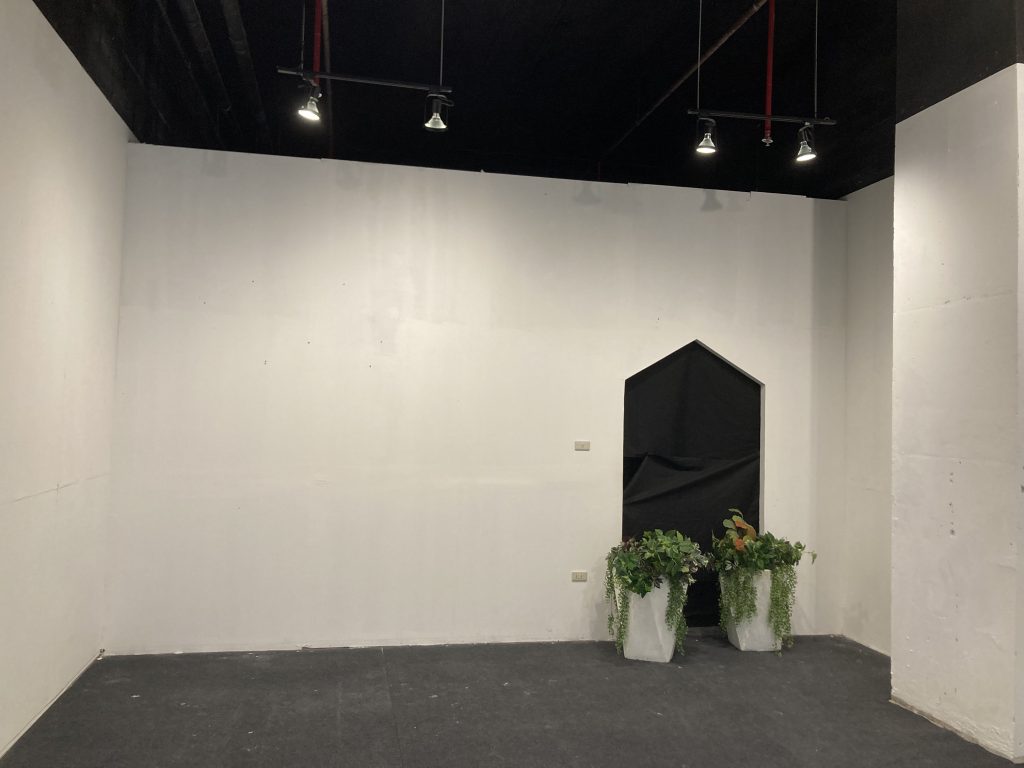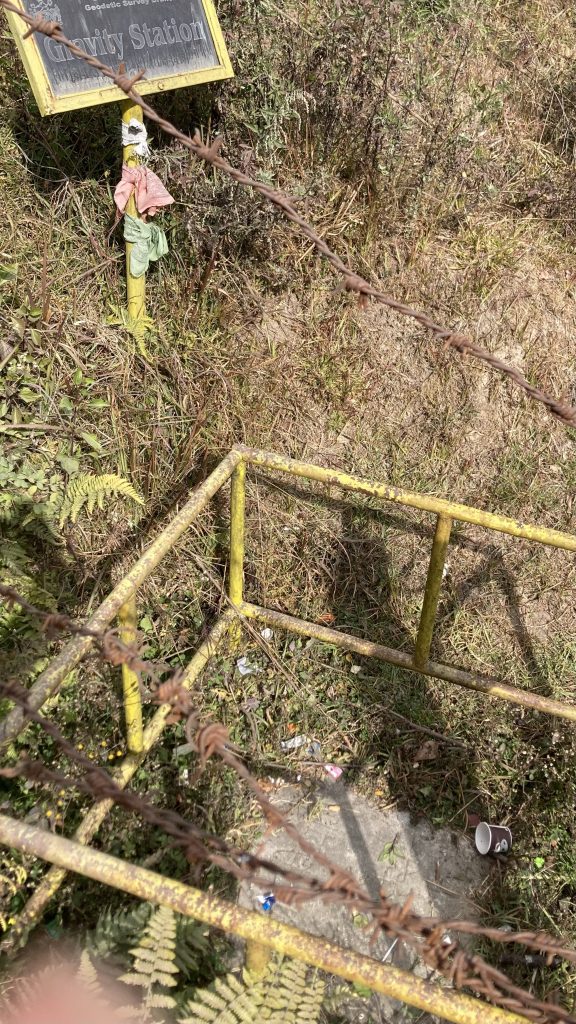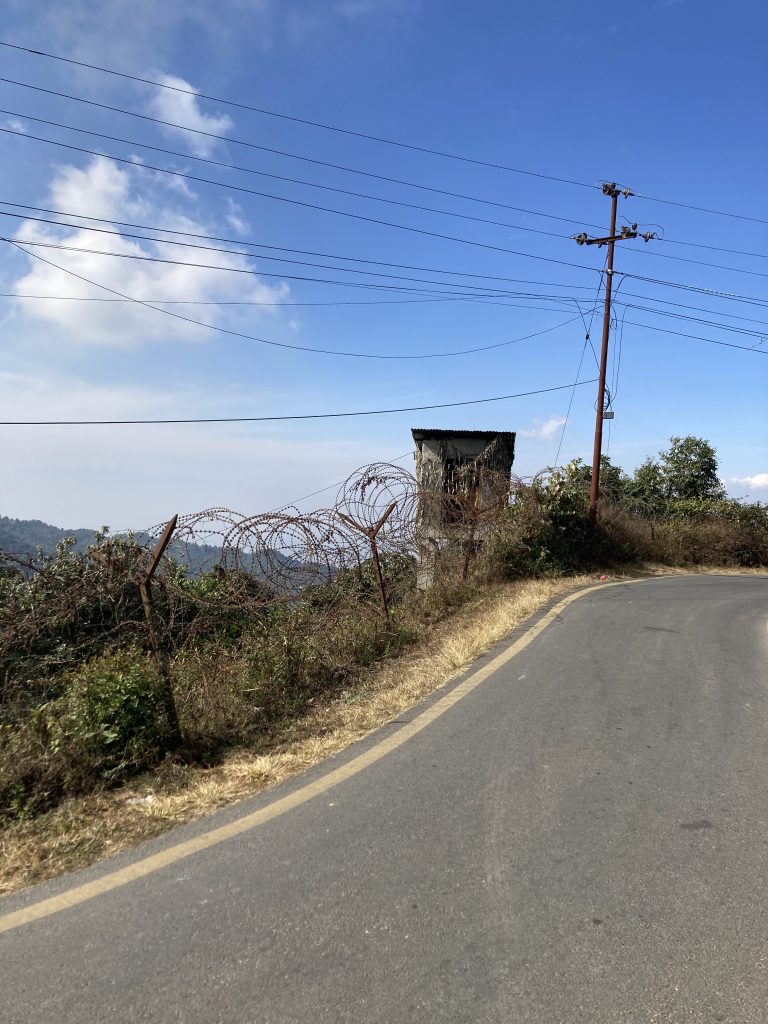stranger danger

The traveler explores the American Wayside, verifying the contents of a mysterious guide written by a man with whom he shares a likeness and name. Excerpts from ‘Autumn by the Wayside: A Guide to America’s Shitholes’ are italicized. Traveler commentary is written in plain text.

It’s been about a year since I finally escaped ‘The Library of Book Levers’ which, if my rough estimations are correct, stocked a real-book to lever-book ratio of about 10:1. I understand the importance of displaying a subject in its context, here meaning that the lever-books would look silly on their own and even sillier on a shelf with dozens of other lever-book, but it meant I had to pull a whole lot of books off shelves before things started moving. There’s also something to be said for the ease with which a person, like me, is able to accidentally trigger the first lever when things are light and easy and the contrasting difficulty of finding a similar door-trigger when the situation has devolved and an exit is important.
‘The Library of Book Levers’ became increasingly difficult to appreciate and navigate the further in I got, is what I’m saying, and it put me off libraries for a while but now I’m here at ‘The Library of Hollowed-Out Books’ and I know, already, that I’m going to regret going inside.
‘Nobody stashes something mundane in a hollowed out book. Do you know why? Because hollowing out books is harder than it looks. It takes strength and determination to get through a book of any useful size. It takes care to keep the page-edges straight and natural-looking enough to pass a glance.
Then, there’s also the importance of finding the right book which, as we’ve discussed, has to be at least a little thick and probably hardback and, if you’re wanting to be clever, the book should be one that doesn’t seem an outlier on your shelf but, at the same time, certainly can’t be a copy of something you already own. So then there’s the need to hunt down a book that you probably would enjoy owning but, rather than enjoy it, there’s the reducing it to a cover which, as the saying goes, is the least important part. It’s a painful process for any book-lover, this disemboweling and this making-a-pact to never own a legitimate copy of such and such title. Most hollowed-out books function as a sort of tell-tale heart for their creators until they are beyond bearing and are emptied of their valuables and passed on to ‘The Library for Hollowed Books’ which proudly claims to be the nation’s least verbose library and which adamantly denies that one of its hollowed out books contains the winning ticket to a soon-to-expire lottery ticket and further asks that people ‘please stop spreading that rumor because it’s a pain to have to shelve all these books every time some down-on-his-luck wacko thinks he’s the first person to hear it.’’
There’s something very acoustically wrong with ‘The Library of Hollowed-Out Books.’ It’s something to do with the inaccessible honeycomb of open space on the shelves, of having to slip between those shelves carefully, so as not to disturb them, because they are kept close together and because the books they hold aren’t heavy enough to anchor them. Air passes through the books and mimics the muffled static of a stopped-up ear. Real, unhollowed books have been placed at stations throughout as anchor points and I find myself needing to use them, to feel the heft of an unmangled novel- to hear its wooden thunk under my fingers.
There’s something especially disturbing to me in this collection and it isn’t until I’m leaving that I realize what it is:
These books are all beginnings and ends, their middles pulled out for space.
My story has been all middle for a long, long time.
-traveler

‘The child-free have a difficult time understanding ‘The Baby Zone’ which is, by all appearances, a dark, baby-sized cavern accompanied by a crudely painted sign indicating its designation as ‘for babies only.’ Someone without children would assume that, under no circumstances, would any caring parent allow their baby to enter ‘The Baby Zone’ unaccompanied. Why would they?
Well.
Babies seem to love it in there. They come out, usually within a day, happier and healthier than they were when they entered. These are facts, verified by grimacing pediatricians and child psychologists, all of whom are bound to admit what they are witnessing but who also feel obligated to say they do not personally recommend babies enter the cavern. If pressed, those same doctors might also admit that babies who have spent a day or two in ‘The Baby Zone’ at any point of their lives tend to make more money as adults and rate themselves as happier than those children who were (and here the doctors airquote) “deprived” of ‘The Zone.’
So, to those travelers unburdened by parenthood, the situation is not so clear cut, is it? What parent doesn’t want the best for their child, even if it means making decisions that feel like risks?
It should be noted that ‘The Baby Zone’ rejects the notion of fur-babies, which is to say, it kills trespassing dogs.
-an excerpt, Autumn by the Wayside

‘It’s commonly held that the closing of hole in the ozone layer can be attributed to proactive climate-centered educational programs in the nineties. It was an overall win for humanity who, in a moment of unusual clarity, banded together to tackle a problem that was a little too abstract to understand fully but that seemed bad all the same.
It’s uncommonly held that ‘The Ozone Hole’ didn’t close all the way. It’s complicated, so, in the tradition of those old PSAs about hydrochlorofluorocarbons, we’re going to use a fairly simple metaphor: a zipper.
Say a sheet of cloth separates two spaces and, in the center of that cloth, there is a zipper. When the zipper is pulled open, things that belong in one space can move between the two. Pretend these things are bad- like mosquitoes. The closing of the hole is a lot like the closing of the zipper- especially in regards to the tiny little hole that will always be present where the zipper meets the end of the track. See, humans didn’t unzip the ozone layer, we tore it. Then we installed a zipper and mostly-fixed it. That tiny hole is still there and available for public viewing in Northern California.
Sometimes, a mosquito squeezes through.’
It’s probably wrong to say that ‘The Ozone Hole’ is the attraction, here, because unlike other impressive nothings (like the Grand Canyon, for instance) this hole isn’t even particularly visible by contrasting surroundings. ‘The Ozone Hole’ is more about the viewing tower, I suspect, a ten-story honeycomb of rickety metal with a lot of ‘risk of fall’ signs plastered about. The tower is impressive in a way that makes people who climb it seem impressive even though it’s a pretty low risk affair.
It’s popular with drone users, unfortunately, so there’s the constant whining of little motors and the constant feeling of being watched and knowing that your sad, sweating self will likely be posted on social media somewhere. I arrive at the top just as one of those drones whizzes across the platform and seems to disappear entirely.
There is a shocked pause. A shared look between those of us who saw it happen and then the others hear the pause and see the look and note how abruptly quiet it became.
“Did that drone just fly through ‘The Ozone Hole?’” Someone asks.
Nobody wants to say that it did. A sign nearby explains a lot about what the ozone layer is and what a hole is in that context. It stops short of explaining that a drone could not ‘pass into it’ and ‘disappear’ but that’s what seems to have happened.
Then, the drone reappears and it’s different than before. It moves slowly, as though intelligent. As though emboldened. As though awakened.
It takes in the six of us on the platform. I’m still on the stairs and I consider throwing myself backward, not for any rational reason but for an overwhelming instinctual fear. The same instinct holds me in place, however, as the drone completes a full circle sweep.
Then, there is the blast of a gunshot. My ears ring and my face is pelted with little shards of drone plastic.
There is a ranger behind me- he’s already holstered his gun. His partner is on the ground, speaking to the drone’s owner. He has the man at gunpoint.
“Y’all see anything?” he asks, and we shake our heads. He nods, “Well, careful not to slip on your way down.”
The drone’s owner is attempting to run. The ranger on the ground is chasing him.
The ranger on the platform taps my shoulder. “Have I seen you around?”
“Probably,” I tell him. “I know some of the guys at the station.”
“Probably not anymore,” he says. “Let’s not meet again.”
-traveler

‘A place for the collector. A place for the too-poor-to-travel. A place for the husband who needs to make his husband think he’s been somewhere other than the place he’s actually been. ‘GetawayAgain’ is a souvenir resale shop with several small branches, a thriving online shop, and a headquarters in central Kansas, where absolutely nobody does any real vacationing.
‘GetawayAgain’ is a hidden treasure to most of the American population but is well known among students of business, its success being proof that a market can be made for anything. The founder, Elisa Milner, got her start hosting vaguely-appropriative theme parties for small corporate gatherings and found it was cheaper, overall, to buy previous-year’s souvenirs from wholesalers than current-year’s actual party goods. When she was asked, during a confrontation at a particularly egregious Hawaiian-inspired luau, whether she had even been to Hawaii, she simply said ‘yes’ and cited the décor as evidence. That’s when she knew she was on to something.
Now anyone can have a shelf full of colorful knick-knacks from faraway places and can brag to their app-dates about the mountains they’ve climbed or the resorts where they’ve told other strangers about the mountains they climbed. The trick Milner stumbled upon is that the need for going somewhere in life is pretty easily mitigated by having been somewhere already, at least in the eyes of others. At ‘GetawayAgain,’ anybody can have gone anywhere for a fraction of the price.’
-an excerpt, Autumn by the Wayside

My first impression of ‘A Collection of Solid Metal Cubes’ is haphazard. The cubes are positioned as though they’ve simply landed where they were thrown, though there are a lot of solid metal cubes to see and some of them are bigger than me. My second impression is something like dangerous, because I had to sign a waiver to walk among the collection and I also have to wear a hard hat which would, I suppose, protect me from about 30% of the cubes in this collection but which would do very little to save my fragile body from the rest. Which is not to say I trust the small cubes, either. They are, by and large, holding up the larger ones and a number are jammed at odd angles like cocked dice.
The internet says the collection is haunted by the ghost of someone who died among the cubes. It’s not something I thought too much about before I stepped into the lobby where there is one wall entirely dedicated to vehement refutations of the ghost (but not the death). It all ended with some ‘tips’ for when the ‘ghost’ might be spotted, all of which were some form of ‘just ignore it.’
I hear a voice nearby- a man saying “Help.”
I grit my teeth and turn to check it out.
‘A bit of a strange one, this collection. Billy Ellis claims he never went out of his way to collect solid metal cubes but that he found a small specimen in the summer of 1978 and, pocketing it, initiated some sort of torturous pattern wherein his everyday life is often interrupted in some way by a solid metal cube and that these predicaments can only be solved by his adding it to the collection. The seed cube, that initial little box, is said to lie somewhere in the center of the collection still, and when asked why he hadn’t tried to part with it, Ellis suggested that a much larger metal cube had shifted on top of it, making it quite difficult to reach. When he was reminded that the larger metal cube’s shifting onto the smaller one seemed to match the same perpetual-obstacle pattern that led to the collection in the first place, Ellis coughed up three small metal cubes and began to weep.
These days, Ellis mostly keeps to a small house, tucked away on the same property as the collection. He can sometimes be seen moving between the two locations, no doubt adding another mysterious find to ‘The Collection of Metal Cubes,’ off I-90 just after it leaves Washington.’
The man has his finger wedged between two small cubes which are, themselves, wedged between two larger cubes and so on and so forth. The setup looks like it’s got enough potential energy to flatten a car but the man promises he’s only just a little jammed, that he was reaching for his cellphone when the pile shifted. I ask him his number so I can call the phone and he tells me the battery’s dead. I ask him if he’s the ghost and he says ‘no’ but seems a little put out.
“Did you read something in the lobby that said I was a ghost?” he asks.
“Yeah.”
“Do I look like a ghost to you?”
I take a step forward and motion to his leg, which is just a little more transparent than a person might suspect of a solid, terrestrial creature.
“Yeah.”
The man’s about to retort when we both hear a family with kids coming out of the lobby. We agree, without having to really say it, that it’s best for me to go. I don’t want some stupid kid taking out a loadbearing cube while I’m nearby, and he doesn’t want to put the work into convincing me he’s not a ghost just to perform some ghostly mischief.
This is the way I like my visits to run: weird, but agreeable, which is why I’m more than a little upset when I find a small metal cube in the toe of my shoe the next morning.
-traveler
© 2024 · Dylan Bach // Sun Logo - Jessica Hayworth